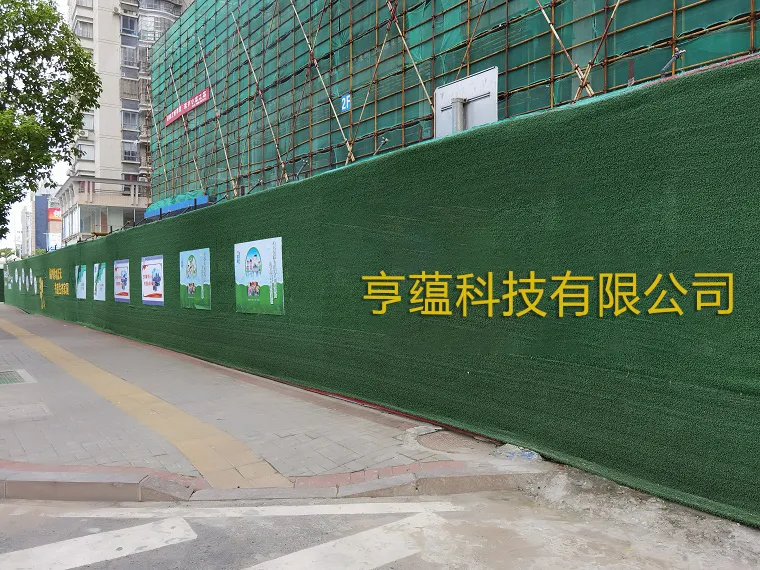
- Afrikaans
- Arabic
- Belarusian
- Bengali
- Czech
- Danish
- Dutch
- English
- Esperanto
- Estonian
- Finnish
- French
- German
- Greek
- Hindi
- Hungarian
- Icelandic
- Indonesian
- irish
- Italian
- Japanese
- kazakh
- Rwandese
- Korean
- Kyrgyz
- Lao
- Latin
- Latvian
- Malay
- Mongolian
- Myanmar
- Norwegian
- Persian
- Polish
- Portuguese
- Romanian
- Russian
- Serbian
- Spanish
- Swedish
- Tagalog
- Tajik
- Thai
- Turkish
- Turkmen
- Ukrainian
- Urdu
- Uighur
- Uzbek
- Vietnamese
golf putting grass
Nov . 16, 2024 11:47 Back to list
Understanding Golf Putting Grass The Key to a Perfect Green
When it comes to golfing, one of the most crucial aspects that can make or break a player’s game is the putting green. The grass on these greens plays a pivotal role in determining how the ball moves across the surface. Let’s delve into the characteristics of golf putting grass, its importance, and how it affects the game.
Types of Grass Used in Golf Greens
The grass used for putting greens typically falls into two categories cool-season grasses and warm-season grasses. Cool-season grasses, such as Bentgrass and Poa Annua, thrive in northern climates and are favored for their ability to resist wear and tear. Bentgrass, in particular, is known for its fine texture and ability to grow densely, providing a smooth surface for putting.
On the other hand, warm-season grasses like Bermudagrass and Zoysiagrass are predominantly used in southern regions. These grasses flourish in warmer temperatures and offer great resilience against heat and drought. The choice between these types often depends on the geographical region and the climate in which the golf course is located.
Characteristics of Putting Grass
Putting grass needs to meet specific criteria to ensure optimal performance. It should be dense enough to provide a smooth putting surface, resistant to disease and pests, and capable of handling foot traffic. Additionally, the growth of putting grass should be managed to maintain an even height, as any inconsistencies can affect the ball's roll.
The ideal height for putting green grass is generally between 0.125 to 0.5 inches. This low-cut grass allows for better ball roll and minimizes the chances of the ball getting caught in thicker blades. Regular mowing, aeration, and topdressing with sand are essential maintenance practices that help achieve this ideal condition.
The Role of Grass in Putting Performance
golf putting grass

The type of grass and its condition significantly influence how a golfer perceives the putting surface. A finely manicured Bentgrass green will provide a different experience compared to a rougher Bermudagrass surface. Golfers often describe the feel and response of the ball on these surfaces as crucial to their putting success.
Moreover, the speed of the greens is a vital factor affecting putting performance. Golf courses manage grass height and moisture levels to control green speed, typically measured on the Stimpmeter. Faster greens require more delicate touch and precision from players, as the ball can easily roll past the hole if struck too hard.
Seasonal Considerations and Maintenance
The care and maintenance of putting grass can vary with the seasons. In cooler months, cool-season grasses will be active, while warm-season grasses may go dormant. Therefore, proper seasonal maintenance practices are crucial for ensuring that the greens remain in the best condition year-round.
During the summer months, especially in areas using warm-season grasses, maintaining adequate moisture and managing disease are of utmost importance. Conversely, during winter, overseeding with a different type of grass can help maintain playability while the primary grass type is dormant.
Conclusion
Understanding the nuances of golf putting grass can significantly enhance a golfer's experience on the course. The right type of grass, coupled with meticulous maintenance and seasonal care, influences not only the speed and smoothness of the greens but also the overall playing conditions.
Golfers must appreciate the science and artistry behind maintaining these greens, as every detail contributes to their performance. From the moment a golfer steps onto the green, they are reminded of the delicate balance between nature and sport. Whether it’s the subtle texture of the grass or the speed of the greens, every aspect meticulously curated allows golfers to sharpen their skills and enjoy the game they love.
In summary, the grass on a putting green is not just a surface; it’s a critical component that affects the quality of the game. Understanding its characteristics and maintaining it properly can lead to better performance and, ultimately, a more enjoyable experience on the golf course.
-
The Benefits of Artificial Turf for Indoors
NewsJul.15,2025
-
How Artificial Grass Suppliers Ensure Quality Products
NewsJul.15,2025
-
Artificial Grass and Pets: A Space for Relaxation
NewsJul.08,2025
-
Balcony & Outdoor Decoration with Artificial Grass
NewsJul.08,2025
-
Best Indoor Artificial Grass for Home
NewsJul.07,2025
-
Best Pet Turf for Dogs: Safe & Durable Artificial Grass Options
NewsJul.07,2025
Products categories









